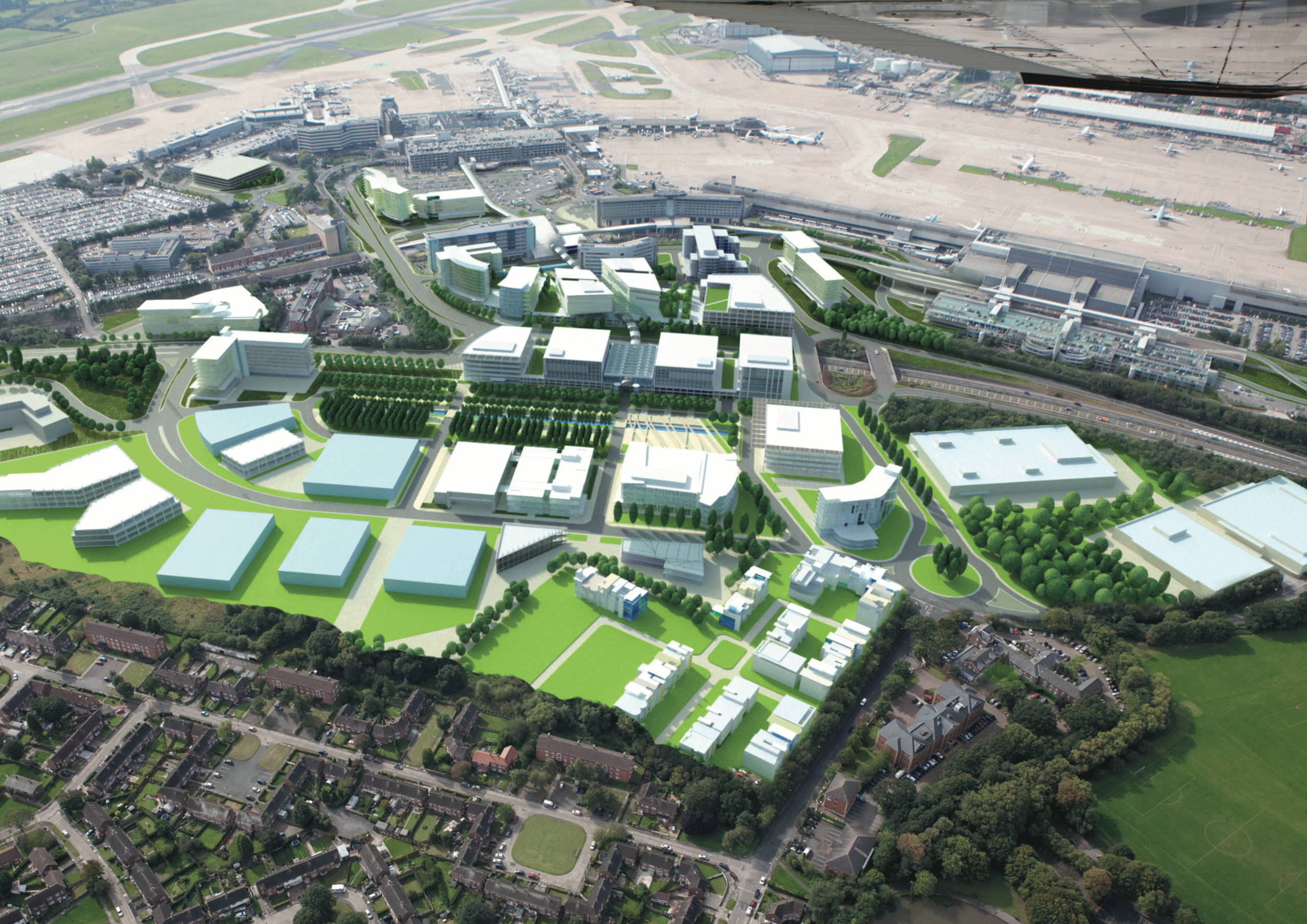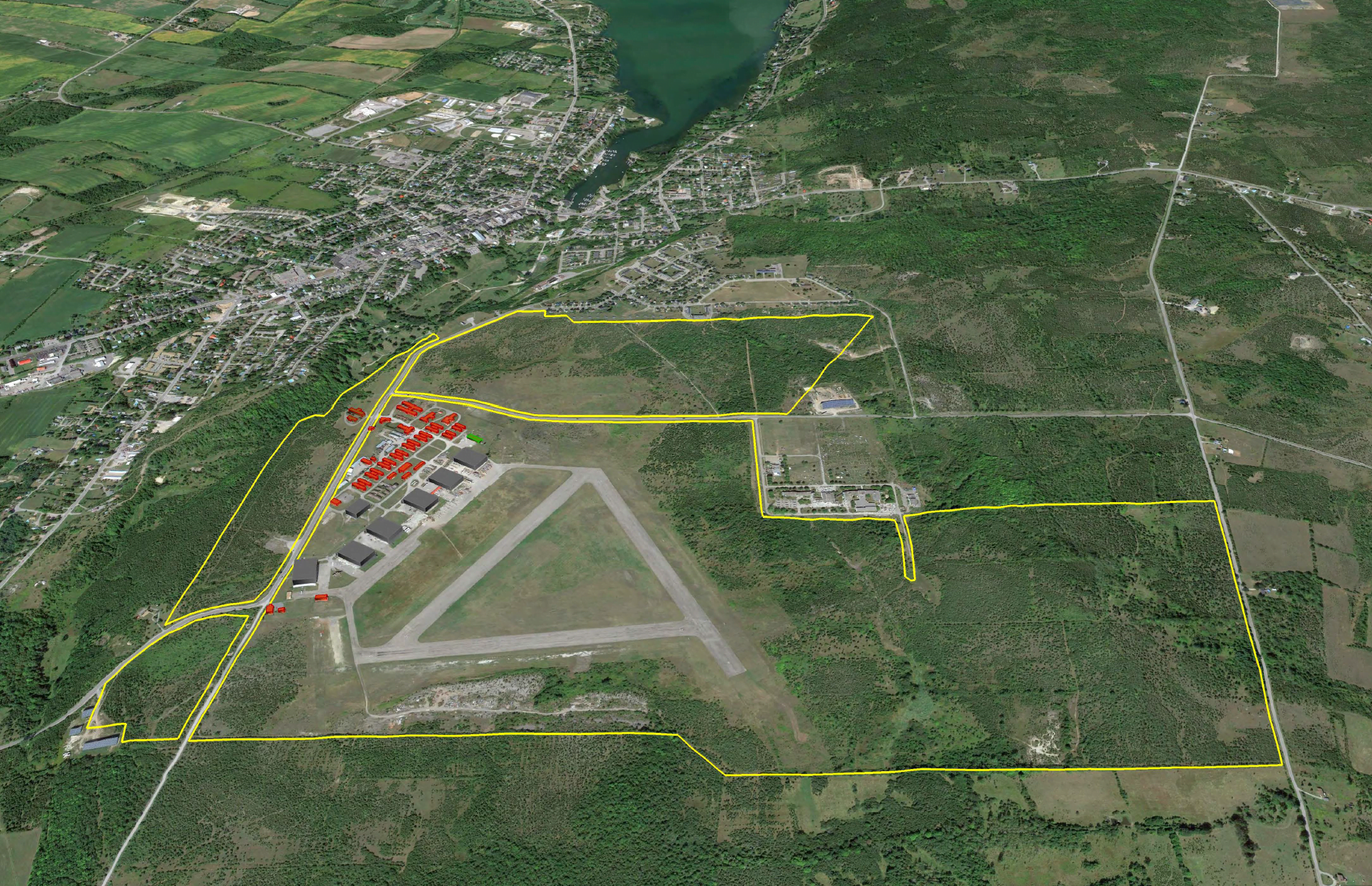Manchester Airport’s status as the UK’s third largest aviation hub, combined with its projected growth to 50 million passengers over the next 25 years, spurred the Manchester Airports Group (MAG) to launch an ambitious new phase of development. To harness this opportunity, Urban Strategies Inc. was retained in 2010 to prepare a vision and conceptual masterplan for the 60-hectare site. The framework set out by Urban Strategies positioned the site as a dynamic mixed-use district with global business appeal, distinct from other regional locations. By combining real estate opportunities with a strong sense of place and a robust design framework, the masterplan established Airport City as a complementary destination to the airport, rather than merely an adjunct to aviation activity.
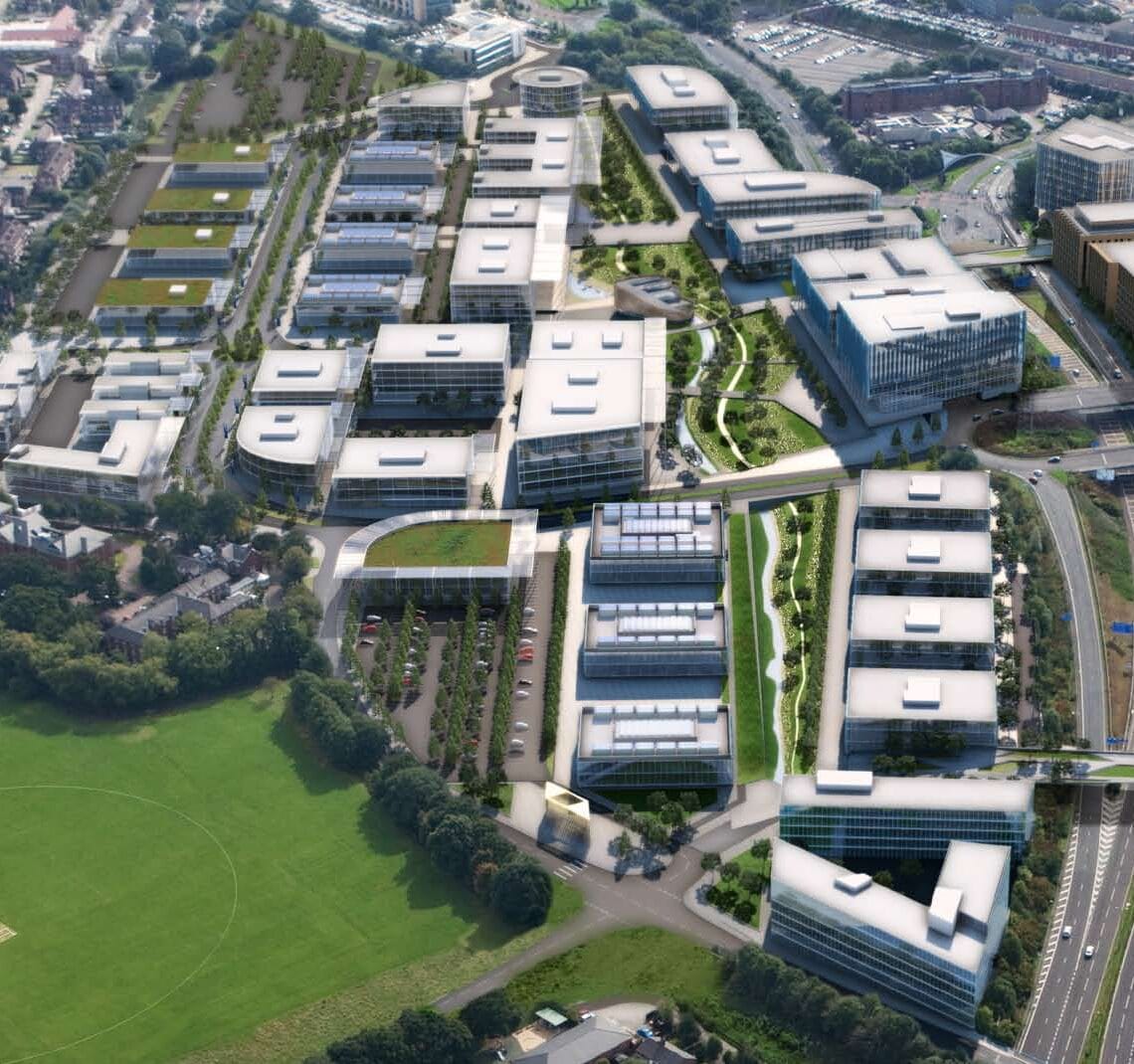
The master plan of Airport City North established a long-term development framework with focus on connectivity and place-making.
A central pillar of the masterplan was connectivity. The plan aligned development with regional and national transport infrastructure—including rail and motorway networks—to maximize accessibility for international passengers, businesses, and employees alike. While uncertainty around HS2 underscored the risks of relying on unconfirmed infrastructure, the broader emphasis on accessibility reinforced Airport City’s competitive advantage. Equally important was the focus on placemaking: rather than creating fragmented commercial parcels, the vision emphasized high-quality public realm, green space, and amenities that would attract long-term investment, promote employee wellbeing, and set a benchmark for sustainable, international-grade business environments.
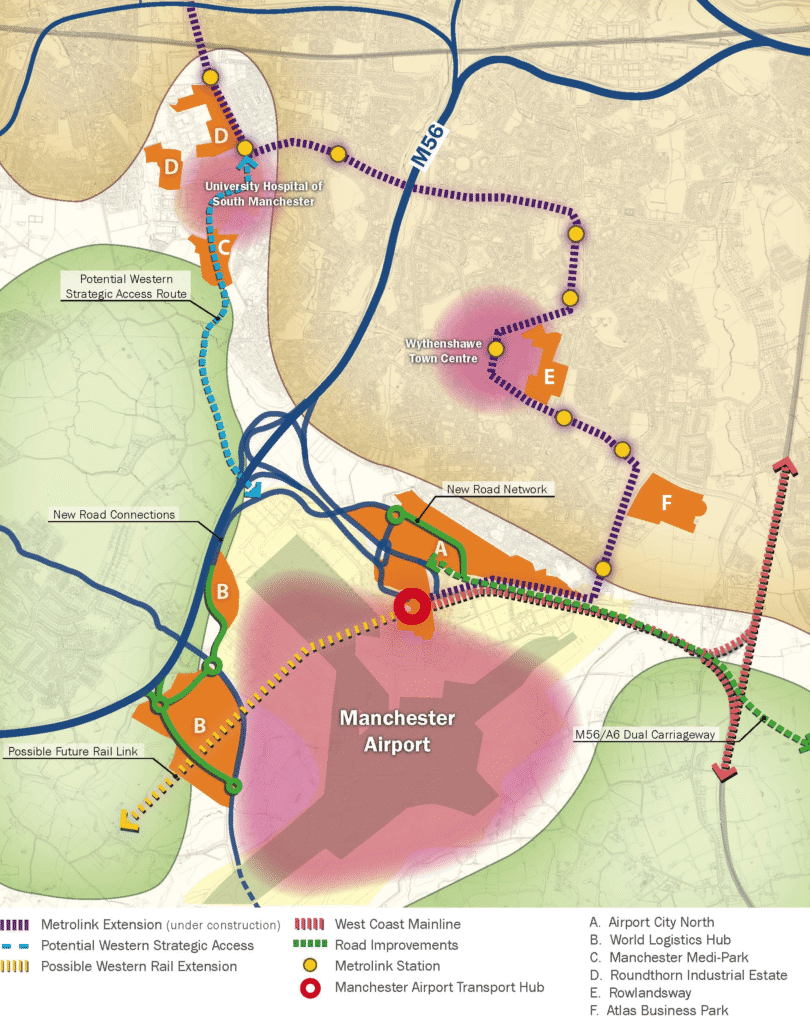
Integration of Development with Infrastructure at the Airport City.
Implementation has demonstrated both the strength and adaptability of this strategy. Airport City South, conceived as a logistics-led district, quickly secured occupiers and investment, proving the viability of the concept. Airport City North, initially planned as an office-led hub, faced headwinds in the UK office market, but the flexibility of the masterplan allowed it to be reimagined as ‘Mix Manchester,’ a science, innovation, and advanced manufacturing campus. Together, these outcomes illustrate how Urban Strategies’ masterplan provided a resilient framework—capable of guiding logistics, office, hotel, and advanced manufacturing uses—while adapting to shifting market conditions. The result is a living strategy that continues to advance Manchester’s role as an international hub for business, connectivity, and innovation.
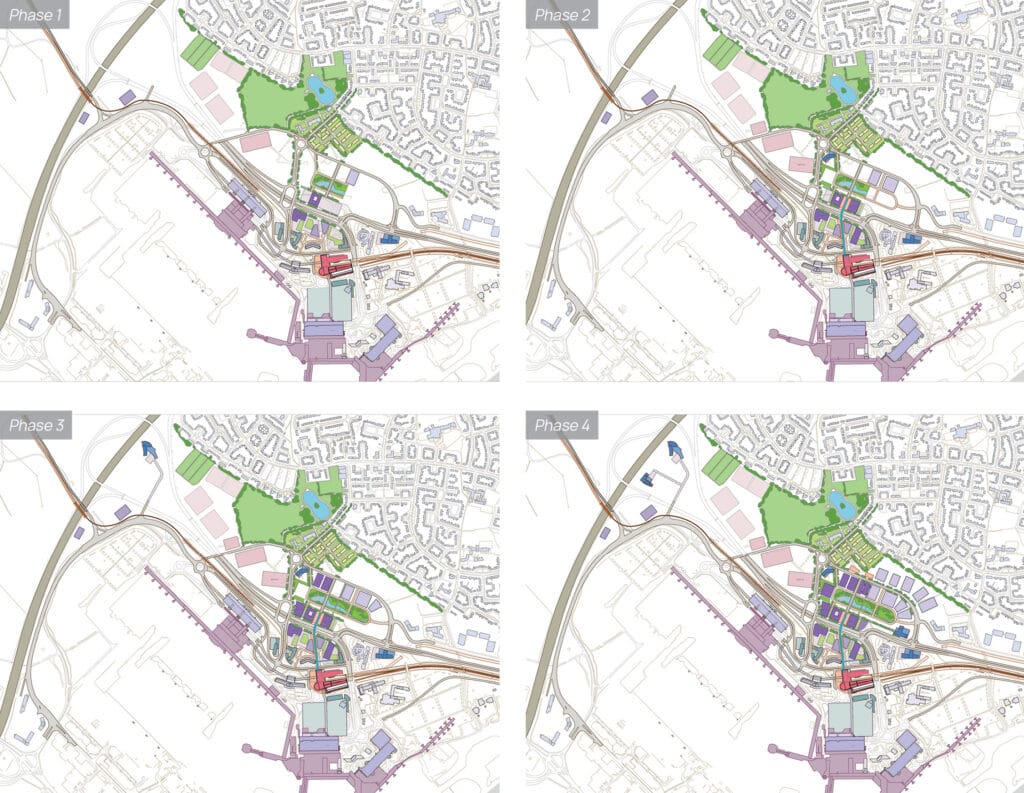
The master plan framework anticipated an incremental and adaptive evolution of Airport City over time.
Key Team Members
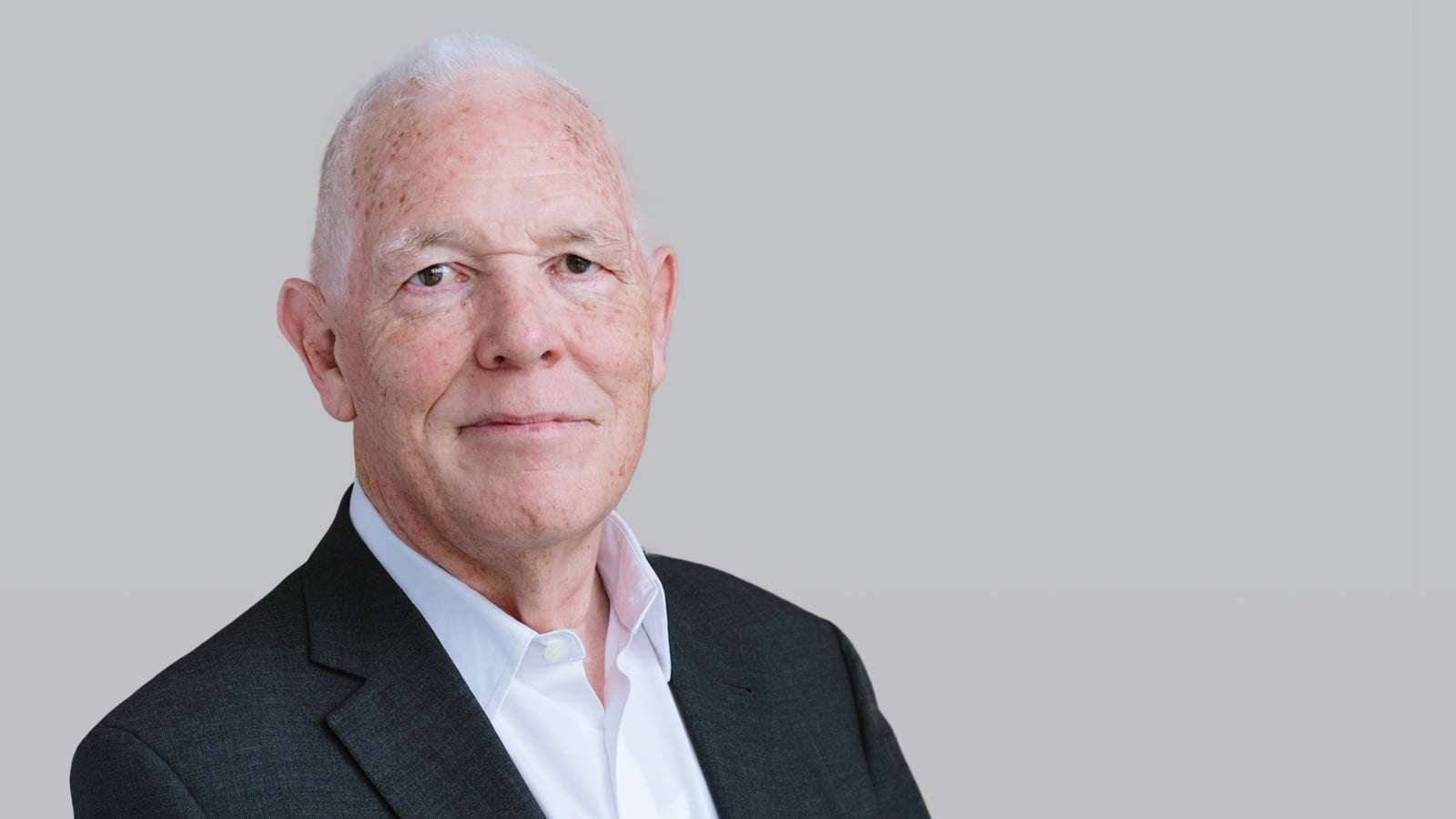
Joe Berridge

Geoff Whittaker

